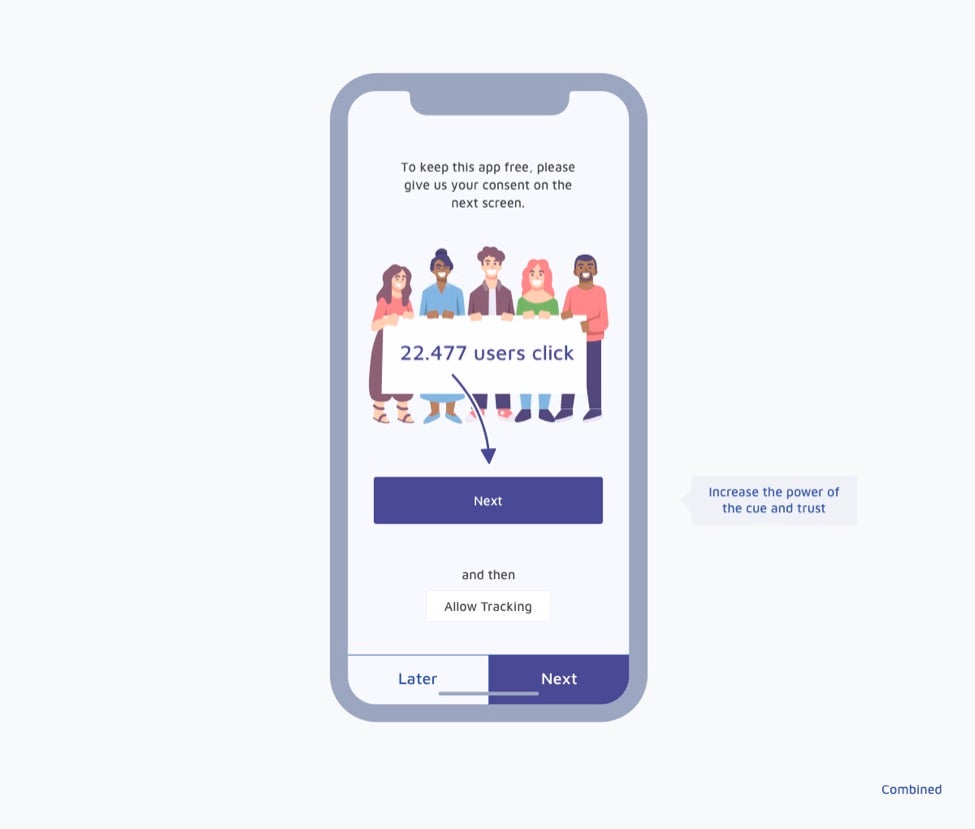“Data-Driven Thinking” is written by members of the media community and contains fresh ideas on the digital revolution in media.
Today’s column is written by Katie Hutcherson Madding, VP of product at Adjust.
With the restrictions on IDFA scheduled for release in early 2021, app developers have a new and business-critical challenge ahead: the user opt-in. Many apps in Apple’s ecosystem have spent years developing user journeys tailored for the optimal user experience. And they now must find a way to gain consent without disrupting their user relationships.
The upcoming IDFA restrictions mean app developers will have one chance to trigger the Apple consent pop-up in their app — meaning it’s crucial apps optimize toward opt-in. But it’s also important to note that if a user doesn’t consent to Apple’s pop-up the first time, developers will still be able to deep link the user from their app to the iOS app settings at a later date.
The good news is that opt-ins will become the norm. Similar to GDPR, where 81% of visitors opt-in, we predict that users will become preconditioned to interfacing with privacy requests. However, this doesn’t mean that you should rely on habitual interactions. Now more than ever, it’s critical to understand your user’s entire journey and relationship with your brand in order to effectively optimize toward consent.
While some brands are further along in testing than others, through simulations we’ve seen opt-ins range from 20-40%. Even on the higher end of the spectrum, this means everyone needs to be planning to improve this metric. This is why it’s critical to bring User Experience (UX) together with data science to find an optimization strategy that’s best for your brand.
Where to start?
The best place to start is with your existing user base, by k-means clustering of specific retention-based groups. We recommend using specific metrics such as time in-app, prior permission interaction within the app and engagement level.
Each group will need to be tested separately, as a new user who has never interfaced with your app will have a very different reaction to an opt-in pop-up than those users who’ve been leveraging your app for years. Additionally, if you have a global audience, including regions as a part of your groups will be important as well.
After identifying significant user groups, you’ll want to break down the dimensional factors of what we’re calling the “pre-permission prompt.” We highly recommend brands use a pre-permission prompt to request consent prior to triggering the iOS pop-up. This ensures that you call the pop-up when you know the user is going to say “yes”, since you only have one shot.
Once the user says “no” to the pop-up, the only way to obtain consent is to send the user to the settings menu of their iPhone to give their consent. While you can deeplink the user directly into the settings menu, this means they have to leave your app – which is subpar UX.
This prompt is entirely yours, so you can customize, design, and word it to best fit your app. Essentially, it works as your own internal consent form.
Test and evaluate
Just like your current user acquisition campaigns, you’ll want to run factor analysis and multi-regression tests to find the optimal prompt given your various user groups. We recommend testing:
- Behavioral Messaging (cue, reaction, evaluation, ability, timing)
- Frequency
- Tone
- Vocabulary
- Design
- Format (full screen, banner)
- Action (serving after a user completes a specific action)
- Onboarding (serving during onboarding)
While each of these models have different nuances that require a deeper dive to understand, we highly recommend starting simple, as many of these factors may have only minimal significance depending on your vertical. You’ll want to begin with a pretty basic consent flow while you test, so that you know what works and what doesn’t, in order to ship a perfect consent flow. Now that we have more time to build and test with Apple’s postponement, it becomes even more critical to get started now and find the optimal arrangement for your app.
After you’ve made a decision on your UX approach with when, where and how you want to get your users to give consent, the work shouldn’t stop. Every app is different, along with its user base and context of use. We advocate for rigorous testing and trialing with common approaches used in design research, such as A/B-testing and randomized controlled experiments.
Start planning today
Optimizing for opt-ins necessitates a user- and metric-driven approach that looks at the problem holistically and strategically. It starts with defining your UX strategy and mapping the micro behaviors of your user groups. Next comes designing a persuasive pre-permission prompt at the interface level. Then you’re ready to start testing different placements and evaluating their efficacy.
The clock is running out fast. So, regardless of your method for securing user consent, be sure to get started planning today so you see a much more favorable outcome later.
Follow Adjust (@adjustcom) and AdExchanger (@adexchanger) on Twitter.















